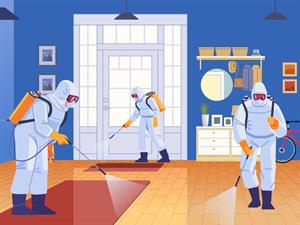PDF chapter test TRY NOW
Antiseptic
A liquid or cream which arrests the growth or kills the microbes and infective agents on the living surfaces.

Antiseptic
Antiseptic is effective against one or integrated forms of bacteria, fungi, viruses or other microorganisms. It is also called asskin disinfectant.
Example:
- Dettol (mixture of chloroxylenol and terpinol)
- Tincture
- Water mixture soap
- Iodoform
- Phenolic solution
- Ethanol
- Boric acid
Natural antiseptics:
- Garlic
- Turmeric
- Aloe vera
Side effects of antiseptics:
If we use antiseptic without dilution, it can cause severe irritation on the skin. Sometimes, diluted antiseptic left on the skin for a long period can also irritate. Other side effects are,
- skin rash
- itching
- skin redness
- skin inflammation
How do antiseptics work?
There must be a definite food contribution, moisture, oxygen, and minimum temperature for the growth of microbes. While using antiseptics, they change the environment in a harmful way.
What is a disinfectant?
A liquid which kills the microbes and infective agents on the non-living surfaces.

Using disinfectant on the non-living surfaces
Differences between antiseptics and disinfectants:
Antiseptics | Disinfectants |
Applied to the surface of the living things. Example: Humans, animals | Applied to the surface of the non-living objects. Example: Furniture, bathroom, other household items |
| Does not harm living tissues. | Harms living tissues. |
| Sometimes called skin disinfectant. | It is not an antiseptic. |
| Contains chemical reagents called biocides, which is lower in concentration. | Biocides are higher in concentration. |
| Generally used in hospitals, healthcare centers. | Used in homes, public places. |
Reference:
https://images.pexels.com/photos/3987145/pexels-photo-3987145.jpeg?cs=srgb&dl=woman-applying-hand-sanitizer-3987145.jpg&fm=jpg
